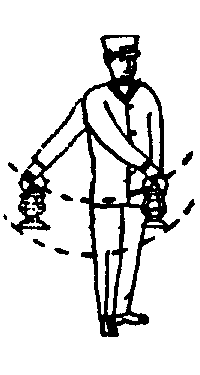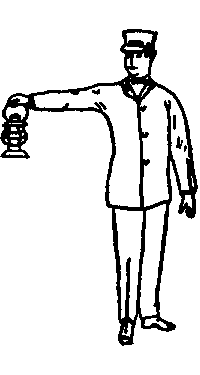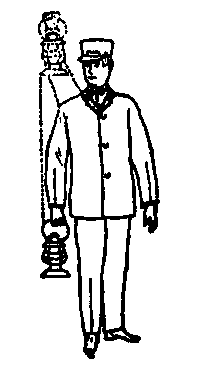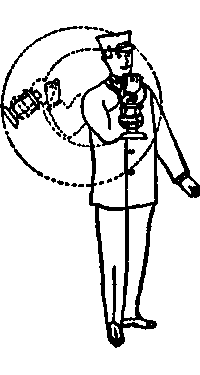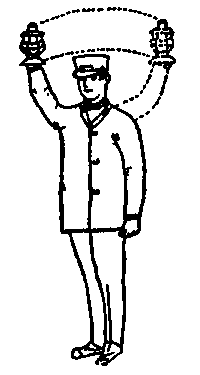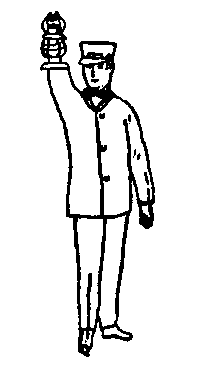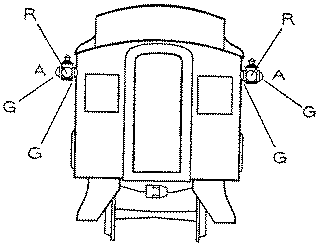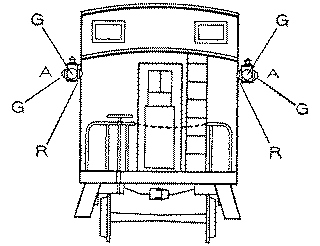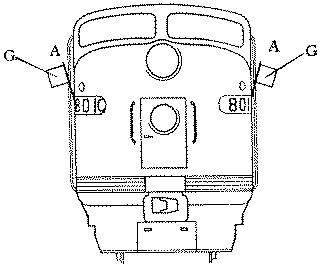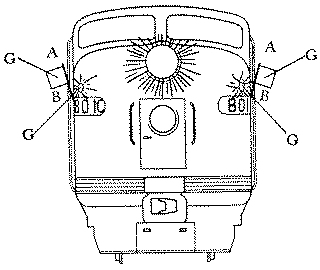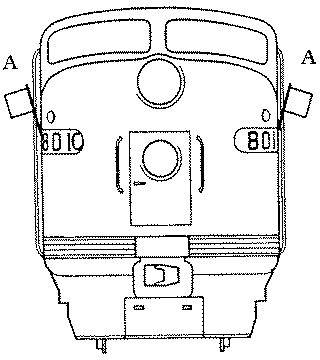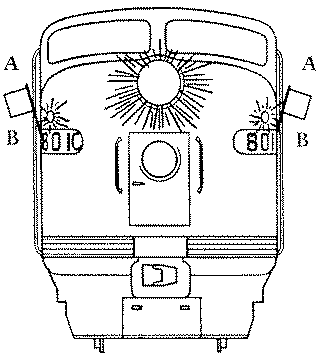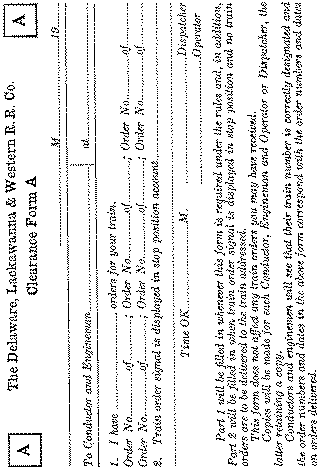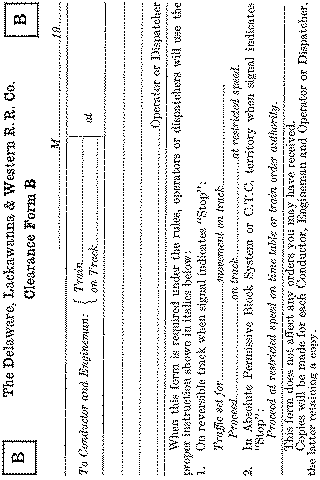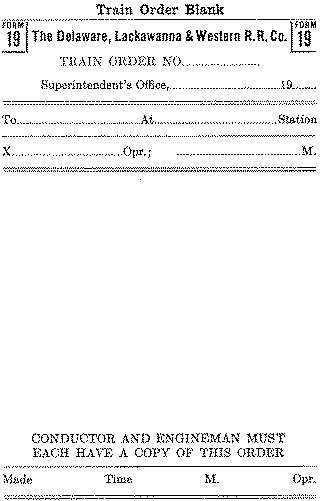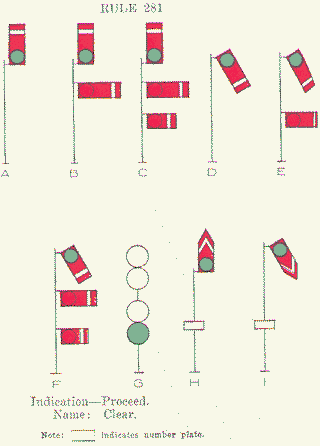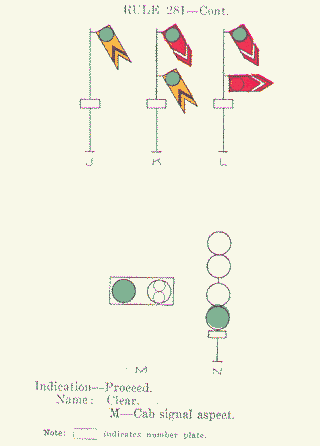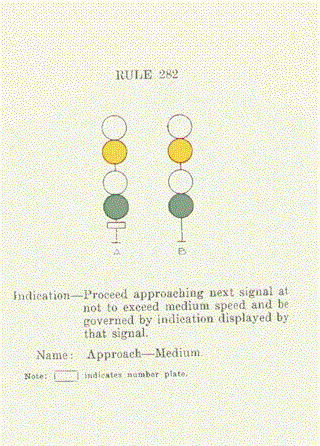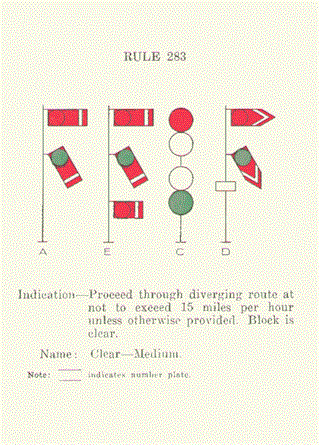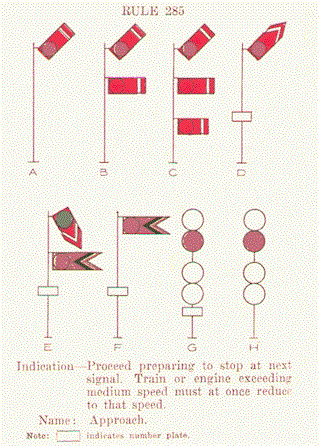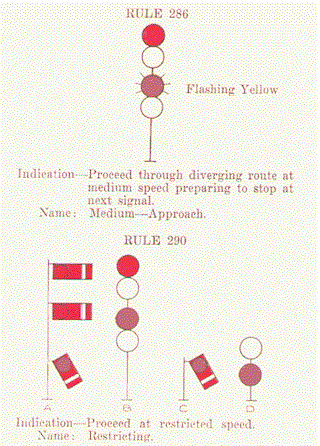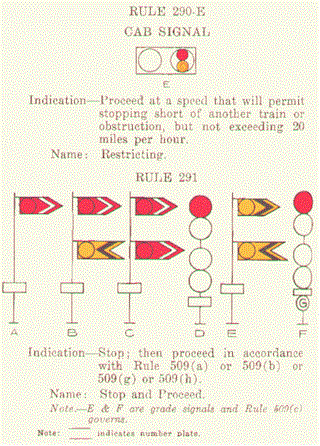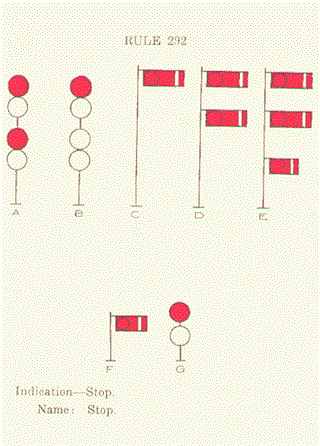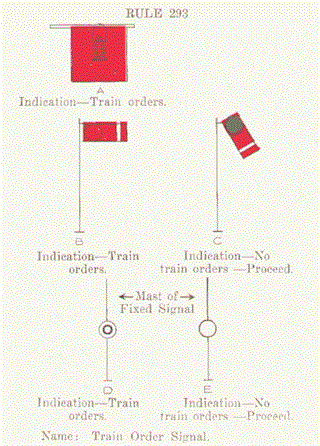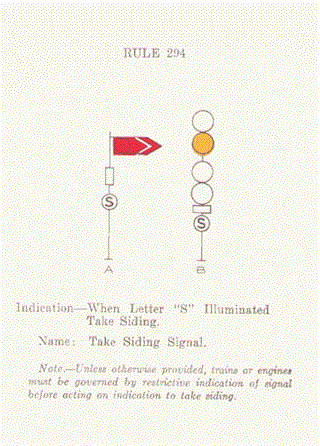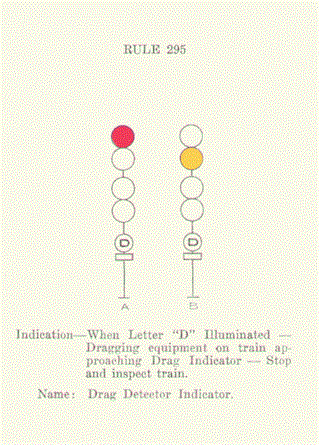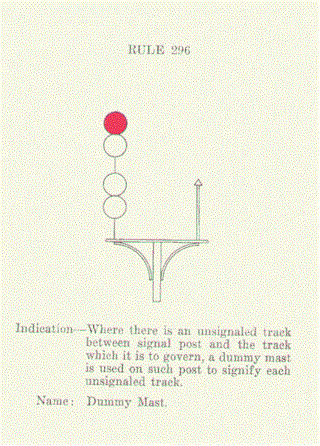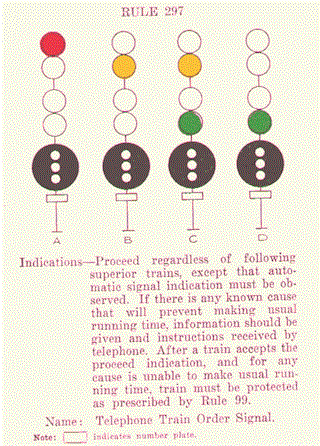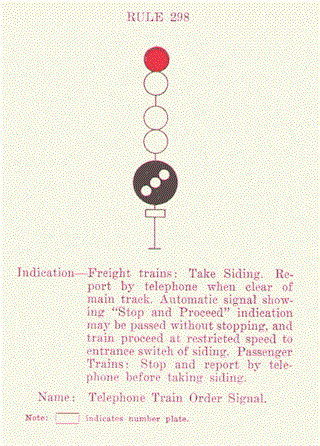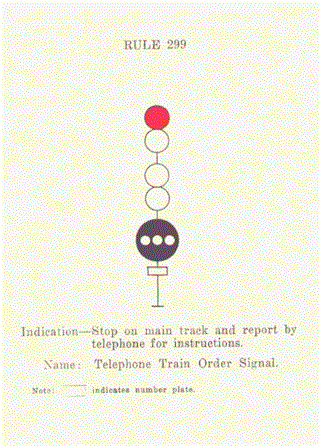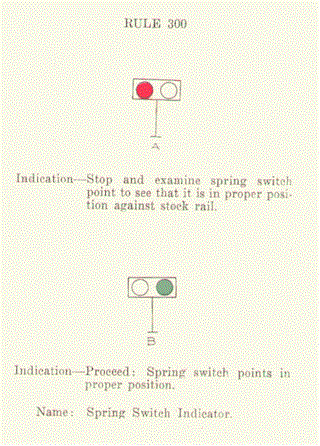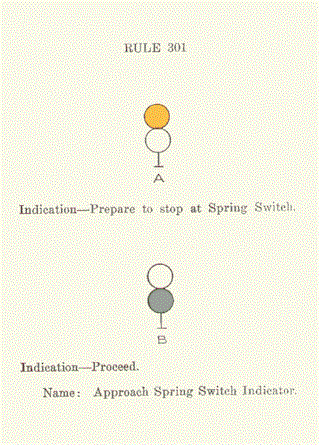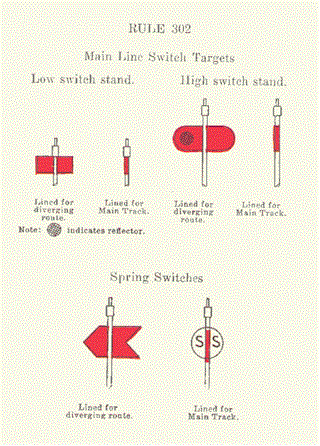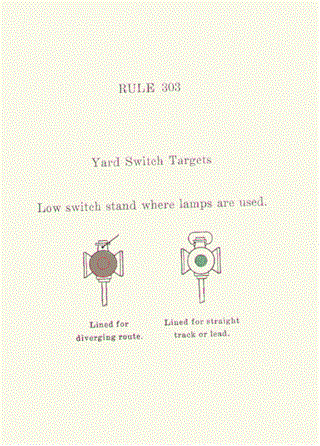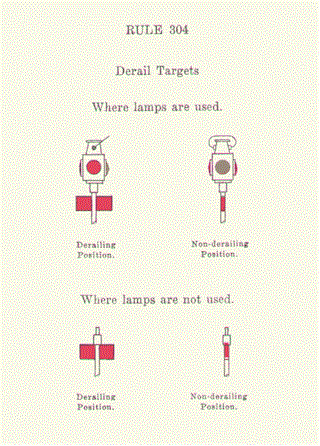|
necessary, in addition, displaying lighted fusees. When recalled and safety to the train will permit, he may return, leaving the torpedoes and a lighted fusee.
When a train stops under circumstances in which it may be overtaken by another train, the engineman will immediately signal the flagman to protect the rear. When ready to proceed he will recall the flagman.
The front of the train must be protected in the same way when necessary by the head trainman or baggageman, and when they are not available, by the fireman.
Conductors and enginemen are responsible for the protection of their trains.
INSTRUCTIONS ON RULE 99
Under circumstances requiring protection of train, the flagman must go back immediately with flagman's signals, without being whistled out or otherwise instructed, a sufficient distance to insure full protection, taking into consideration the curves, grades, weather and surroundings that may affect the view, and will there place two torpedoes on top of the rail two rail-lengths apart on the engineman's side of track. He will remain at this point until recalled by the prescribed whistle signal or until overtaken by another train.
If a following train is within sight or hearing before the flagman has reached a point insuring full protection, he must, at once, place two torpedoes on the rail, and at night or in fog or stormy weather or where the view is obscured, he will, |
|
|
in addition, display a lighted red fusee and continue toward the approaching train, displaying stop signals until they are answered and the train arrives.
If recalled before reaching a point insuring full protection and a following train is within sight or hearing, the flagman must, at once, place two torpedoes on the rail, and at night, or in fog or stormy weather or where the view is obscured, in addition, display a lighted red fusee, and continue toward the approaching train, displaying stop signals until they are answered and the train arrives. If there is no train within sight or hearing the flagman may return, first placing and leaving two torpedoes on the rail two rail-lengths apart, and in addition, leave a lighted yellow fusee outside the rail on the engineman's side of track.
When recalled after reaching a point insuring full protection, if a following train is within sight or hearing, the flagman must display stop signals, and at night or in fog or stormy weather, or where the view is obscured, he will, in addition, display a lighted red fusee and remain until the following train arrives. If there is no following train within sight or hearing the flagman may return, leaving the torpedoes as placed, and in addition, leave a lighted yellow fusee outside the rail on the engineman's side of track.
In fog or stormy weather the flagman must not be recalled when a first-class train is due.
When practicable, torpedoes must be placed on straight line and not less than 500 feet from a whistling post. If absolutely necessary to place |
|
